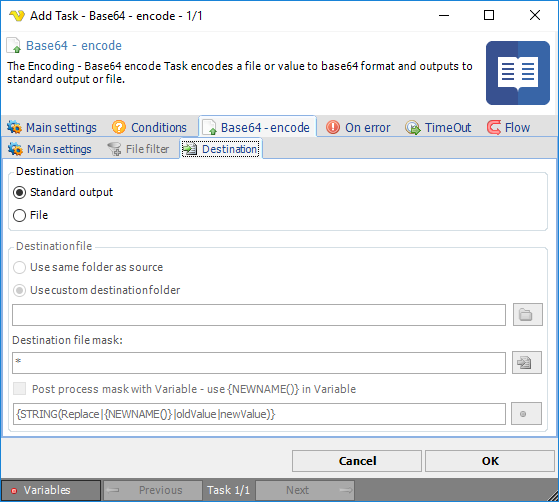

Looking for job perks? varbinarymax, DB::raw, ), Laravel. If count is omitted, it defaults to the length of newsubstring. These cookies help provide information on metrics the number of visitors, bounce rate, traffic source, etc. Preencha o cadastro e fique informado sobre a nossas vagas. I write about Salesforce Marketing Cloud, Marketing Automation, Development and Programmatic Languages. Many of these are equivalent, in purpose and syntax, to the text-string functions described in the previous section.
Purpose of base64 encoding how to#
How to convert varbinary(max) to base64 SQL Server 2014. To subscribe to this RSS feed, copy and paste this URL into your RSS reader. I'll wrap that up into a function for convenience. What was the actual cockpit layout and crew of the Mi-24A? Making statements based on opinion back them up with references or personal experience.

Otherwise, an error is raised when decode is supplied invalid base64 data including when trailing padding is incorrect. Extracts the substring of bytes starting at the start'th byte if that is specified, and stopping after count bytes if that is specified. Returns number of bits in the binary string (8 times the octet_length). For these functions, an argument or result of type text is expressed in the database's default encoding, while arguments or results of type bytea are in an encoding named by another argument. MySQL base64 longblob, MS SQL varbinary(max), varchar(max) varbinary(max) CONVERT, /9j/4QxnRXhpZgAATU0AKgAAAAgABwESAAMAAAABAAEAAAEaAAUAAAABAAAAYgEbAAUAAAABAAAAagEoAAMAAAAAAAAAAExAAIAAAAeAAAAcgEyAAIAAAAUAAAAkIdp 128`, $this->attributes = DB::raw("CONVERT(VARBINARY(MAX), '". And yes, in this case it would be security by obscurity.Option 1: Convert binary to Base64 using JSON Option 2: Convert binary to Base64 using XML XQuery Option 3: Convert binary to Base64 using XML and the hint Webbinary_data = LargeBinary dataFrame = pd.DataFrame(data= ) print(dataFrame) with nnection_handling(): with threadLock: print(binary_data) if binary_data: dataFrame.to_sql(tableName, con=, schema="dbo", index=False, if_exists='append', dtype=binary_data) else: rtrim('\x1234567890'::bytea, '\x9012'::bytea) \x12345678, set_bit ( bytes bytea, n bigint, newvalue integer ) bytea. It is a bad idea, however, to consider Base64 encoding as a security measure since at most it will make casual URL "hacking" slightly more challenging for the novice. If I want to GET that data, then I would have to Base64 encode it.Įven though there are better solutions, I've seen this approach taken in internationalized applications supporting different character sets. For example, I have a / character I want to send to another server as a payload Base64 encoding, or HTTP POST, is the only way to send the value of filehash in ASP.NET MVC without custom routes. It is perfectly reasonable, although not user friendly, to encode data that may be mis-interpreted by the browser, or an MVC framework. I'll draw upon my experience with ASP.NET MVC which may or may not apply to your situation. HTTP URLs may be Base64 encoded not for security reasons, but for application reasons, specific to that web server. I still find this technique silly for the reasons I mentioned above. Note: I've heard people argue that encoding the URLs might hide certain information from shoulder-surfers, or that it can help reduce crawling, or any number of arguments of that sort. If their website is well secured against SQL injection XSS CSRF etc., and they deiced to encode the URLs like that, then it's just plain stupidity. If their website is vulnerable to SQL injection and they try to hide that by encoding the URLs, then it's security by obscurity. However, that doesn't mean this is security by obscurity. The developers of that site might have opted to make the website appear more secure by having cryptic URLs and whatnot. It makes debugging much more difficult especially when you have to find a specific string in a URL in the log files. In fact, it's not even a programming convenience it's the exact opposite. This is just a silly way of making the website "production-ready" (whatever that means). There's absolutely no security gain from using this method of presenting the URLs.


 0 kommentar(er)
0 kommentar(er)
